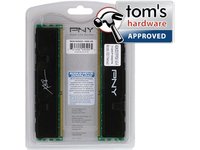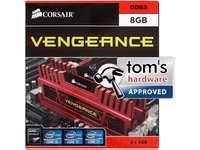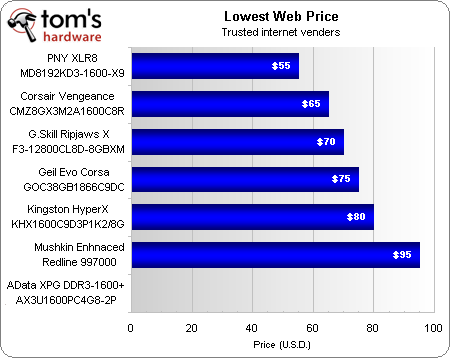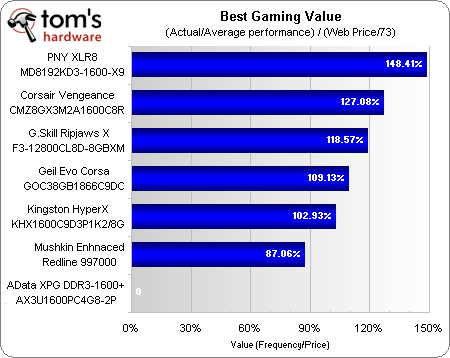Seven 8 GB DDR3 Memory Kits For Your AMD A75 Motherboard
Because integrated GPUs generally employ shared system memory, RAM performance has a significant effect on gaming frame rates. We're testing seven 8 GB DDR3 kits that manufacturers tell us are a perfect match for AMD’s mainstream Llano-based APUs.
Which DDR3 Memory Kit Is Right For You?
We've already seen that the best way to maximize the performance of AMD's Llano-based APUs is to increase memory data rate and minimize latencies. And yet, all of today’s modules are capable of reaching the architecture's highest DDR3-1866 multiplier.
The cheapest kit, PNY's XL8R DDR3-1600 CAS 9, required a deal-breaking CAS 11 setting to reach that data rate. At the same time, they only finished 2% slower than the fastest parts. So, how much cheaper are PNY’s modules?
Although we couldn’t get a U.S. price for Adata's kit, G.Skill’s closely-matching memory costs $15 more than PNY’s. That’s a significant 27% increase in price for a miniscule 2% increase in performance.
The average price of all modules, $73, sets the baseline for our value analysis. We used DDR3-1866 gaming performance to set the other half of our performance-to-price comparison.
A great price gives PNY a significant value lead, when paired with AMD’s A6-3650 APU. Corsair’s good price puts it in second place.
Which of these would we pick? It’s hard for us to recommend running anything at CAS 11, but the super-low price on PNY’s XLR8 MD8192KD3-1600-X9 makes a strong argument against any bias we have against loose timings. On the other hand, Corsair’s moderately-priced Vengeance CMZ8GX3M2A1600C8R reached the same DDR3-1866 high mark at a mere CAS 8.
Given such a small performance difference, we could easily recommend either of these products, depending on your budget. And so, we will. Both kits receive Tom's Hardware Approved billing.
Get Tom's Hardware's best news and in-depth reviews, straight to your inbox.


Current page: Which DDR3 Memory Kit Is Right For You?
Prev Page DDR3-1333 Benchmark Results

